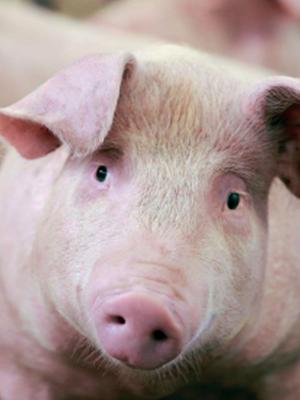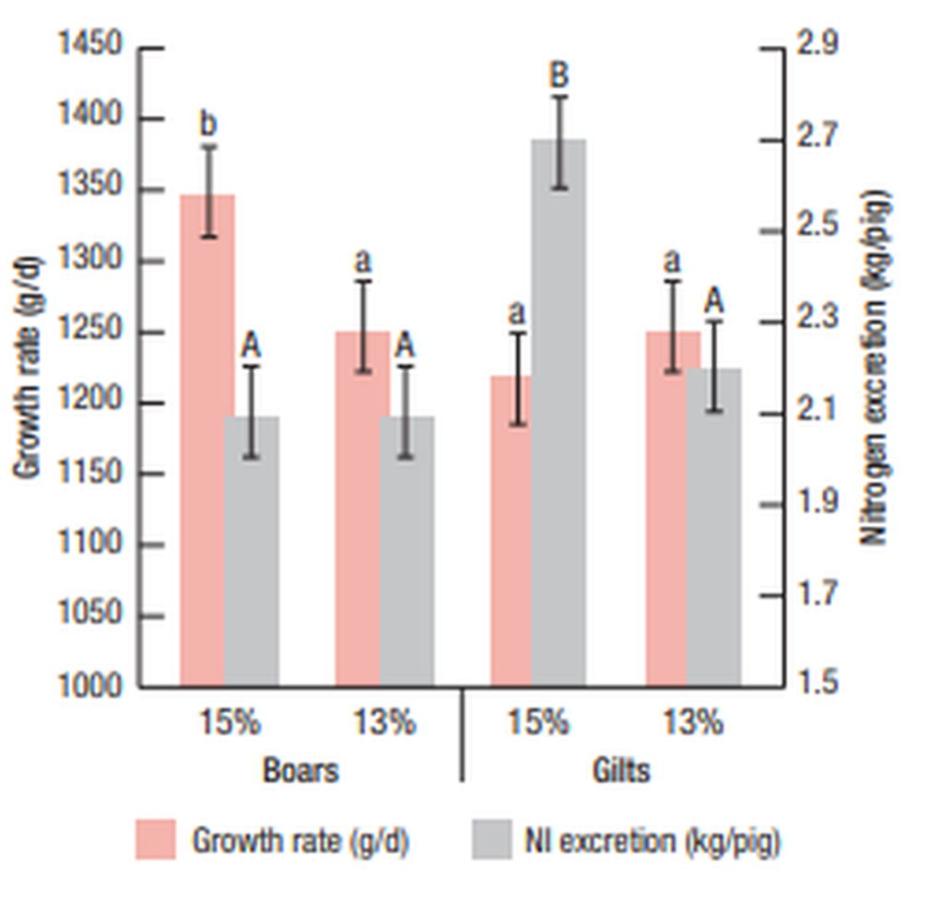Practical solutions for environmentally friendly pig production - Local Research Group explores ways to reduce nitrogen excretion
Date published:
This is the first in a series of articles which aims to provide some practical advice for pig producers to reduce the environmental impact of pig production in terms of nitrogen and ammonia emissions.

While emissions from pig production are relatively small in relation to emissions from total agricultural production, the nature of local pig production means there may be localised challenges surrounding nitrogen and ammonia emissions. Therefore, reducing nitrogen excretion (and hence ammonia) is an objective within pig production, but how can this be achieved in practice?
Input & Output
The Pig Research Consortium comprised of AFBI, Thompsons, Devenish Nutrition Ltd. and Preferred Capital Management has been active in achieving reductions through an applied research programme which has been adopted by many pig producers across Northern Ireland. Nitrogen, in the form of dietary crude protein (CP) and amino acids, are essential for growth, so it is not just a simple case of reducing nitrogen intake to reduce nitrogen output. Maintaining the optimum supply to achieve optimum production is essential to the sustainability of the industry as well ensuring that nitrogen and ammonia excretion does not increase due to poor production performance and efficiency. This has been an area of focus for the Pig Research Consortium, with a series of trials conducted aimed at maintaining or improving production efficiency while reducing overall excretion.
As a result of the work by the Consortium, we know that dietary CP levels can be safely reduced to 15% in finishing diets for pigs from 60kg, if amino acids are balanced and adequately supplied. On the strength of our research, most producers have already adopted the use of 15% dietary CP which has reduced N excretion by 20% from finishing pigs and demonstrates the pig industry’s ability and commitment to respond positively to environmental challenges.
Diet Trials
Phase feeding is one method to target nutrition to the requirement of the pig. As the pig matures its nutrient requirement changes, hence it seems logical to change the diet to suit the need. However, with every diet change there is an inevitable hit to intake and feed efficiency which needs to be considered. While it is very true that dietary requirements for nutrients reduce as the pig ages due to a higher intake capacity, the majority of pig producers offer one finisher diet from approximately 60kg through to finishing. Slaughter liveweight has increased significantly in recent years and questions have arisen around introducing an additional finisher diet at approximately 100 kg to take pigs to the higher slaughter liveweight of around 137 kg. The theoretical benefits of such phase feeding in finishing are reductions in diet costs and less nitrogen excretion. The theory was tested by our study which offered pigs (both boars and gilts) a 15% CP diet from ~60-100 kg and then a 13% CP from ~100-140 kg on a trial at the AFBI Hillsborough farm and on a commercial farm. This phase feeding regime was compared with the performance of pigs offered either a 15% CP or a 13% throughout from ~60-140 kg.
| 13:13 | 15:15 | 15:13 | Statistically different? | |
| AFBI trial | ||||
| Feed intake (g/d) | 3053 | 2960 | 2944 | No |
| Growth rate (g/d) | 1249 | 1282 | 1209 | Yes (P<0.05) |
| FCR | 2.46 | 2.34 | 2.45 | Yes (P<0.05) |
| N excretion/pig (kg) | 2.2 | 2.4 | 2.3 | Yes (P<0.01) |
| Commercial farm trial | ||||
| Feed intake (g/d) | 2359 | 2663 | 2569 | No |
| Growth rate (g/d) | 968 | 1052 | 1000 | Yes (P<0.05) |
| FCR | 2.62 | 2.53 | 2.57 | No |
| N excretion/pig (kg) | 2.3 | 2.4 | 2.4 | No |
Results
As can be seen from Table 1, results of both trials were similar in that there was no benefit to phase feeding at this later stage.
In the trial at AFBI, changing the diet at 100 kg from 15% to 13% CP, resulted in a significantly poorer growth rate than offering a 15% CP throughout. Performance on the 13% CP diet was intermediate. Performance on the commercial farm was similar, where it was also observed that changing the diet from 15% to 13% at 100 kg was detrimental to performance, but on the commercial farm, the 13% CP diet resulted in the poorer performance.
Table 1 also presents N excretion resulting from each dietary regime and again shows that there was no benefit to phase feeding in terms of N excretion. Therefore, our first practical message from this work is that a single diet should be offered throughout the late finishing stage from approximately 60kg onwards.
As can be clearly seen from the results in Table 1, offering a 13% CP diet reduced performance (especially on the commercial farm) but when we consider the performance of boars and gilts separately our evidence indicates that this poorer performance on a 13% CP diet is because of the reduced performance of boars.
In the AFBI trial, we offered the 15% and 13% diet separately to boars and gilts. The 13% diet not only contained a lower level of CP but also a lower level of lysine (0.9%) and other essential amino acids to test “how low we can go” in terms of reducing CP and in producing a diet with lower levels of expensive supplemental amino acids. Regardless of the dietary CP content, and as expected, boars significantly outperformed gilts at all stages in terms of growth rate and feed conversion efficiency due to their higher genetic capacity to lay down lean growth. As a result of this, boars excrete less nitrogen on a per pig basis (on average 350 g less nitrogen per finishing pig) and the second key recommendation from this work is to split-sex pigs to reduce nitrogen excretion.
Target feeding
This allows dietary nutrient levels to be targeted for boars and gilts when housed separately, which is essential as boars have a higher requirement for amino acids to drive their higher genetic deposition to grow. The benefit of this is highlighted in Figure 1.

Our work has shown that it is possible to offer finishing gilts a lower cost, lower CP/lower lysine (0.9%) diet more suited to their requirements which will lower N excretion. On the other hand, finishing boars should be offered a 15% CP/higher lysine (1.1%) diet to drive their higher growth rate otherwise performance will be adversely affected, and N excretion will increase.
The Pig Research Consortium has continued to investigate practical solutions to sustainable pig production and our next article in this series will give you more information on the feasibility of reducing dietary CP levels further for boars.

Notes to editors:
The Pig Research Consortium is comprised of AFBI, Thompsons, Devenish Nutrition Ltd. and Preferred Capital Management and has been active in achieving reductions through an applied research programme which has been adopted by many pig producers across Northern Ireland.AFBI’s Vision is “Scientific excellence delivering impactful and sustainable outcomes for society, economy and the natural environment”.AFBI’s Purpose is “To deliver trusted, independent research, statutory and surveillance science and expert advice that addresses local and global challenges, informs government policy and industry decision making, and underpins a sustainable agri-food industry and the natural and marine environments”.AFBI’s core areas:Leading improvements in the agri-food industry to enhance its sustainability.Protecting animal, plant and human health.Enhancing the natural and marine environment.All enquires to AFBI.Press-office@afbini.gov.uk